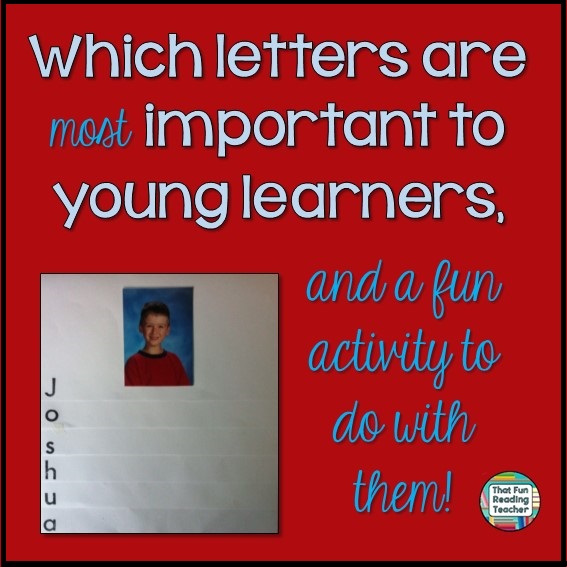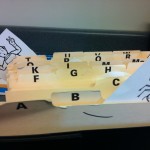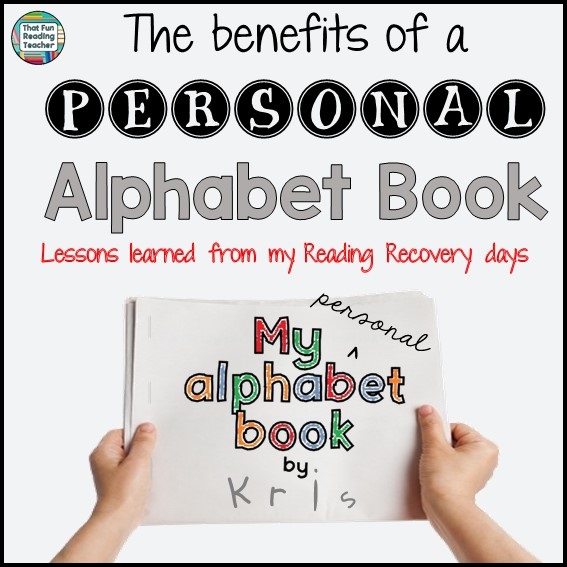Tag Archives : #ReadingRecovery
Which letters are most important to young learners, and a fun (and FREE) activity!
If you want to get children’s interest, ask about their world.It really does revolve around them! The letters young kids learn to identify first are those that they see most often. Many of these are the letters in their names.There are a number of benefits beginning letter learning with letters a child is most familiar with.
Children learn best when they are happily engaged in what they are doing and are most enthusiastic when they feel confident.
With that in mind, here is the ‘how-to’ on the preparation and lesson for the ‘Letters in your name’ flipbook:
Preparation:
- Using 8 ½ x 14 paper, prepare the blank flip books. If a child has six letters in his name, you will need three sheets of paper to lay one on top of the other, leaving approximately two centimeters, or just under an inch between the bottoms of each piece of paper. When you fold the three papers in half, you will have six layers (see photo). Staple these pages together, covering any sharp staple ends safely. You now have the template for the ‘Letters in your name’ flipbook! Be sure to adjust for the length of each child’s name.
- Usually the children associate themselves with the first letter of their name. Consider whether or not you would like a photo to be used on the front cover so it can be ready for the activity, or provide people shaped tracers or stamps, and students can personalize from there
- Have a variety of options available to the children for illustrating the pages in their book. As noted in The benefits of a personal alphabet book, it is important to find out what the child naturally associates with each letter sound on her own. Reading Recovery teachers are equipped with a collection similar to the index car box in the photo, which allows for a quickly accessible variety of pictures for every letter. If what the child suggests is not available, it can simply be drawn. Many sticker collections can provide great content for these files as well as photocopies and pictures from fliers. Holiday fliers are particularly useful. ‘Witch’ and ‘ghost’ are popular alphabet book flier additions, thanks to Party Packagers and their terrific advertisements!
Materials for the activity:
- Upper case and lower case letter stamps (optional, but helpful)
- Prepared flip books (with child’s name lightly marked in pencil on the back)
- Glue sticks and coloring materials
- Small group setting (best done as a center)
- Scissors if using fliers that have not been cut
- Pictures for pages of flip books
The Activity:
- Introduce the activity by talking about names, how special they are, and reinforce that individuality and uniqueness are positive traits.
- Talk about the importance of the first letter of a name. Make big emphasis on capitalization here.
- Show the kids a model of the ‘Letters in your name’ flip book and ask them if they notice anything different about the first letter.
- If you are using stamps, show them the two sets. Explain how to use them, and about the difference between the upper and lower-case set.
- Explain that just like every person is different and special, everyone’s name book will also be different. Even if two children have the same name, it is important for them to choose a picture that jumps into their own mind right away when they hear a letter sound.
- Aim for two or three letters per day with each child. Say the letter sounds for the kids and ask them what comes into their mind when they hear them. If nothing, then leave that letter and move on. It is okay to leave a page blank. This is the start of a record of the child’s letter learning.
- Allow the children to make their pages special with colour and décor.
- Once the class is finished with this activity, send it home to be shared, but only after the information is transferred into a more permanent alphabet book that the child will continue to work on at school. This alphabet book will be a reference for the entire school year, and perhaps the next one, too.
- Have the children ‘read’ their ‘Letters in your name’ flipbook to others with pride. Reading buddies, volunteers, family members etc.
- Most importantly have fun!
What are some ways you introduce letter learning to kids?
Related:
Best wishes with Back to School, everyone!
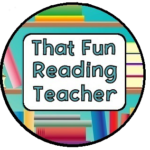 |
|
An important lesson from my Reading Recovery days: Begin at the very beginning
I taught for a decade before I started my Reading Recovery training, beginning with kindergarten in a school where half of my students understood only Portuguese when they arrived. In those first ten years I moved between kindergarten, primary special education and grade one. My grade one students who struggled the most were lucky enough to have the Reading Recovery program in place, and I was astounded at the changes I saw in them in such a short time. Those teachers had some kind of magic and I was thrilled when I was able to take the position at my school. There was a mystery that surrounded what really happened in that little room.
Wait a minute – the kid learns nothing new and the teacher does everything for them?
I began my Reading Recovery training like my fellow trainees, enthusiastic, and in a hurry to get my students reading and writing! I was impatient with the ‘Roaming around the Known’ period: ‘Roaming’ being delicately consolidating (with ABSOLUTELY no teaching) around what the child already knows (the ‘known’), perhaps discovering more about what is known or stumbling upon areas of difficulty somehow missed in the testing process. It was a ten lessons, two week complete, no-stress, the-child-does-all-he’s-capable-of-and-you-do-everything-else period of (what felt like) non-structured, laziness. It drove us all nuts – at first.
But here’s what actually happened.
We had LOADS of fun. The kids, who at the beginning of grade one already knew they were ‘the worst readers in the class’ and had already been refusing to take risks and try anything new, gained confidence and trust in us, the process and themselves and started to try. They were excited to come to Reading Recovery every day, before we even started lessons.
What did we do?
- We read familiar books over, and over, and over again.
- We made our own story books, sharing the marker; the child writing the words s/he knew, the teacher writing the rest.
- We played games with the words and letters the child already knew. We painted (with water) on the walls of the school and the playground, in sand trays, and shaving cream.
- We practiced moving from left to right…and I could go on (and will in a future post)…
My point is, we learned that there is nothing wrong with EASY, especially when dealing with a child whose confidence needs a boost.
Most of the children I have worked with in recent years are these very children. For many of them, the little things are giant in their minds. Anticipation of a task can be more difficult to manage than the task itself. We need to start with success and build up one baby step at a time. You do remember Baby Steps, don’t you?
| [youtube http://www.youtube.com/watch?v=p3JPa2mvSQ4] |  |
And, of course, humor keeps us all going when the going gets tough!
Here are a few links to help anyone who is starting at the very beginning of the literacy journey this year. Best wishes to you!
 |
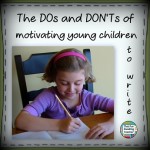 |
 |
 |
 |
 |
PreEmergent Sight-Word-Stages Readers (two words per page, also available in bundles):
 |
 |
 |
 |
http://thatfunreadingteacher.com/
ThatFunReadingTeacher@gmail.com
Click the symbol above to access my TpT Store! 😉
